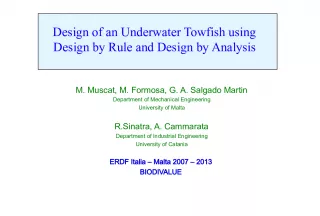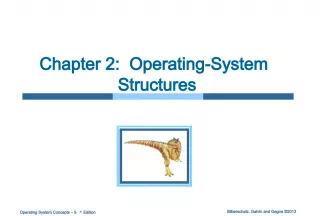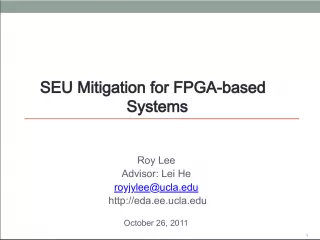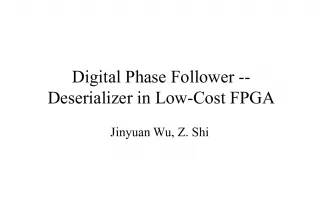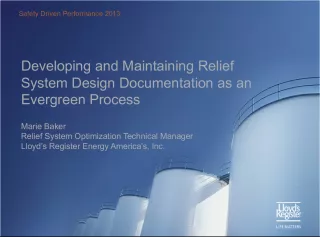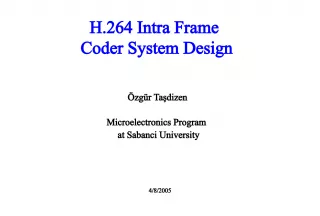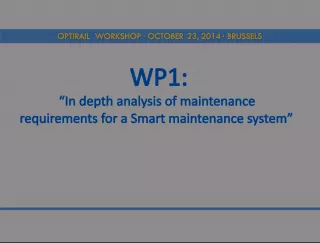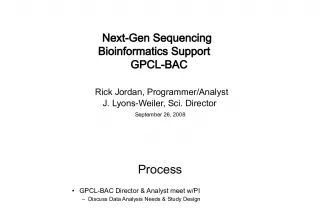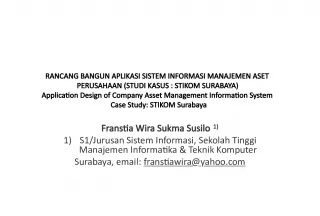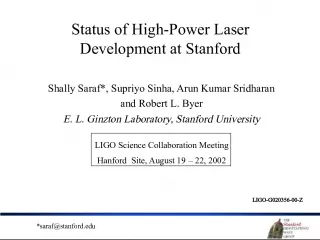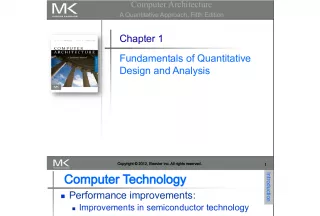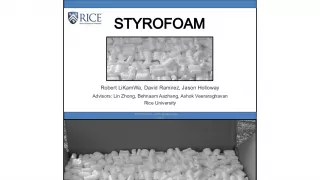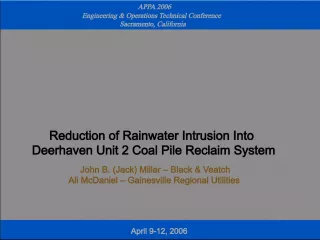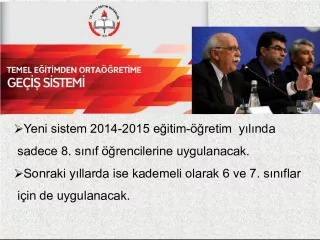FPGA-Based System Design for Low Noise Amplifier (LNA) Characterization and Non-Linearity Analysis
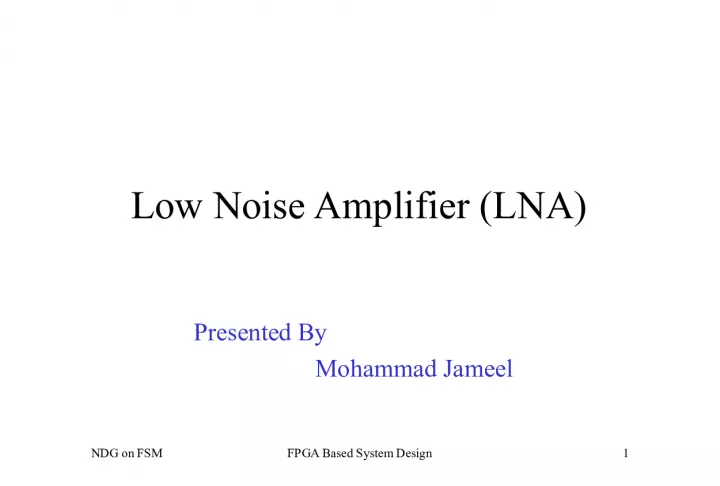

This presentation by Mohammad Jameel NDG discusses the mathematical behavioral model of an LNA, its non-linearity characterization, and baseband equivalent output. The focus is on analyzing even order harmonics to avoid intermodulation distortion in RF systems.
- Uploaded on | 10 Views
-
 lainey
lainey
About FPGA-Based System Design for Low Noise Amplifier (LNA) Characterization and Non-Linearity Analysis
PowerPoint presentation about 'FPGA-Based System Design for Low Noise Amplifier (LNA) Characterization and Non-Linearity Analysis'. This presentation describes the topic on This presentation by Mohammad Jameel NDG discusses the mathematical behavioral model of an LNA, its non-linearity characterization, and baseband equivalent output. The focus is on analyzing even order harmonics to avoid intermodulation distortion in RF systems.. The key topics included in this slideshow are Low noise amplifier, LNA, FPGA-based system design, mathematical behavioral model, non-linearity characterization, intermodulation distortion,. Download this presentation absolutely free.
Presentation Transcript
1. Low Noise Amplifier (LNA) Presented By Mohammad Jameel NDG on FSM FPGA Based System Design 1
2. FPGA Based System Design 2 Mathmatical / Behavorial Model of LNA Mathmatical / Behavorial Model of LNA Mathmatical / Behavorial Model of LNA Mathmatical / Behavorial Model of LNA
3. FPGA Based System Design 3 Designed Mathmatical Model of LNA , Contd Characterization of Non-Linearity (AM/AM) Designed Mathmatical Model of LNA , Contd Characterization of Non-Linearity (AM/AM) Designed Mathmatical Model of LNA , Contd Characterization of Non-Linearity (AM/AM) Designed Mathmatical Model of LNA , Contd Characterization of Non-Linearity (AM/AM) Non-linearity of LNA may be characterized by following equation . Let x(t) is input to a nonlinear pass band model. Output y (t) of this system is given by y(t) = a1x(t) + a2x2(t) + a3x3(t) + a4x4(t) + a5x4(t) Baseband equivalent of y(t) is given as follows. y bb (t) = (a 1 + a 3 x(t) 2 + a 5 x(t) 4 )x (t) - - - eq. 1 Input Signal magnitude and these three coefficients (a 3, a 5 ,a 1 ) are combined according to the above equation to obtain the AM/AM output as even order harmonics( a2, a4, a6 ) do not produce Inter-Modulation (IM) products therefore they are not taken into account in calculation. Intermodulation is one of the major causes of distortion in RF systems.
4. FPGA Based System Design 4 Characterization of Non-Linearity (AM/AM) Characterization of Non-Linearity (AM/AM) Characterization of Non-Linearity (AM/AM) Characterization of Non-Linearity (AM/AM) In order to quantify intermodulation third intercept point (IP3) has been devised. Definition of IP3 The point where the linear gain (a 2 A 2 ) and 3 rd order non-linearity (20log(3a 3 A 3 /4) )intercept with the increase in level of input signal (A) is called 3 rd order intercept point (IP3). It is a given value and is used to calculate a3 and P1dB ( 1 dB compression point)
5. FPGA Based System Design 5 Characterization of Non-Linearity (AM/AM) Characterization of Non-Linearity (AM/AM) Characterization of Non-Linearity (AM/AM) Characterization of Non-Linearity (AM/AM) AM/AM Simulink Block Where |u|= magnitude of input signal LGAIN/ a1= input linear gain IP3= 3 rd Intercept Point |u| / Out1= modulated magnitude of input signal AM/AM |u| LGAIN IP3 |u| / Out 1
6. FPGA Based System Design 6 Characterization of Non-Linearity (AM/AM) Characterization of Non-Linearity (AM/AM) Characterization of Non-Linearity (AM/AM) Characterization of Non-Linearity (AM/AM) a3/ k3 Simulink Block Where LGAIN/ a1= input linear gain ( 1 - 1000 ) IP3= 3 rd Intercept Point ( Range : 5 100 dbm ) a3 = 3 rd order coefficient/ 3 rd order gain V1 dB/ P1 dB= 1 dB Gain compression point a3/ k3 LGAIN IP3 a3 V1 dB/ P1 dB
7. FPGA Based System Design 7 Characterization of Non-Linearity (AM/AM) Characterization of Non-Linearity (AM/AM) Characterization of Non-Linearity (AM/AM) Characterization of Non-Linearity (AM/AM) a3/ k3 Simulink Block
8. FPGA Based System Design 8 Characterization of Non-Linearity (AM/AM) Characterization of Non-Linearity (AM/AM) Characterization of Non-Linearity (AM/AM) Characterization of Non-Linearity (AM/AM) a5/ k5 Simulink Block Where a3= 3 rd order coefficient/ 3 rd order gain LGAIN/a1= input linear gain V1 dB/ P1 dB= 1 dB Gain compression point a5= 5 th order coefficient/ 5 th order gain a5/ k5 a3 LGAIN V1 dB/ P1 dB a5
9. FPGA Based System Design 9 Characterization of Non-Linearity (AM/AM) Characterization of Non-Linearity (AM/AM) Characterization of Non-Linearity (AM/AM) Characterization of Non-Linearity (AM/AM) a5/ k5 Simulink Block
10. FPGA Based System Design 10 AM / AM Simulation in MATLAB AM / AM Simulation in MATLAB AM / AM Simulation in MATLAB AM / AM Simulation in MATLAB The figures below shows the simulation result ip3 = 10dbm & ip3 = 80 dbm
11. FPGA Based System Design 11 AM / AM Simulation in Verilog AM / AM Simulation in Verilog AM / AM Simulation in Verilog AM / AM Simulation in Verilog
12. FPGA Based System Design 12 AM / AM Simulation in Verilog AM / AM Simulation in Verilog AM / AM Simulation in Verilog AM / AM Simulation in Verilog
13. FPGA Based System Design 13 Addition of Thermal Noise Addition of Thermal Noise Addition of Thermal Noise Addition of Thermal Noise Addition of thermal noise AWGN noise is added to the output of AM/AM block. This block calculates white noise for the input signal P n = 4kRTf s (10 NF/10 +1) Where NF = Noise Factor = 2, R = System Impedance = 1, K = Boltzmann Constant fs = Sample rate = 0, T = Temperature = 290 K
14. FPGA Based System Design 14 Inherent Characteristics of LFSR Inherent Characteristics of LFSR Inherent Characteristics of LFSR Inherent Characteristics of LFSR
15. FPGA Based System Design 15 Desired Characteristics of LFSR Desired Characteristics of LFSR Desired Characteristics of LFSR Desired Characteristics of LFSR


